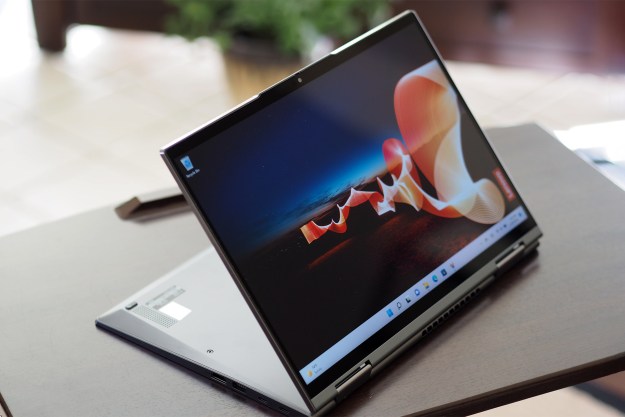Rob Enderle really gets my goat. You remember him?he?s the one who just wrote a TalkBack column disparaging Apple. What really burns me is that he got more hate mail than I ever have. Now I feel ten feet small. There?s only one way to regain my rank as the most hated writer in consumer electronics: It?s time to talk about premium cables again.
The last time I wrote about cables was, well, in my book. But the last time before that was in a magazine devoted to custom installation. That column was headlined ?The Truth About Cables,? so I guess you could call this one ?The Truth About Cables, Part II? (even though there?s no first part here on the Designtechnica.com website.)
In the words of British comedian Peter Cook, ?I have learned from my mistakes?and I?m sure I could repeat them exactly.? Allow me to repeat all the mistakes I made in my previous piece on this subject.
The mistake that drew the heaviest fire had to do with digital cables. Not HDMI and IEEE 1394 (a.k.a. FireWire); those connections weren?t widely used in audio/video gear when I last wrote about cables. The two types of digital cables I referred to were the optical and coaxial types. Their most common use is to transfer CD, Dolby Digital, and DTS signals from a DVD player to a receiver using a single connection.
The main difference between them is that coaxial cables transfer the signal electrically, while optical cables transfer the signal (you guessed) optically. However, some folks believe there?s also a difference in audio quality. My mistake was in saying that I?d listened to both types?through some pretty high-end equipment, too?and heard little difference between them.
This sent readers howling. One demanded, ?Was that article written on a napkin?? He was absolutely convinced that coaxial cables were audibly superior. Another reader, though more politely ?disappointed,? reached the opposite conclusion; he felt optical cables were vastly underrated. I love it when readers contradict one another. Both of them couldn?t be right, but they were equally certain that I was mistaken.
Now I must take a few moments to reread that column and look up the other mistakes. Ah, there?s nothing like a walk down memory lane! But this time, I?ll repeat the remainder of my alleged mistakes in reverse order.
Although I was agnostic in the digital coax-vs.-optical debate, I did side with analog interconnects. They really do sound different from one another. The place where you?re most likely to need them in a home theater system is between the universal disc player and the receiver. While there are true digital interfaces for the SACD and DVD-Audio formats, they haven?t penetrated big-time just yet, so most folks still have to use 5.1 (in other words, six) analog interconnects to get high-resolution surround signals from the disc player to the receiver.
If you?re using a separate surround preamp-processor and multi-channel power amp?because running huge power-sucking speakers with a one-chassis receiver would be a serious mistake?you?ll also want to use high-quality interconnects for the analog connections between these components. And of course, any source component lacking a digital audio output will require the use of analog audio interconnects.
(How many mistakes have I made so far? I?ve lost count.)
Video interconnects are another mistake-prone subject. You?ll get better results from a set of component video cables than from an S-video cable, and better results from S-video than from composite video. The reason is simple: Component video separates the signal into video?s three primary colors (actually, they?re two color-difference signals and a brightness signal ?oops, another mistake!) S-video is second best, because it still keeps brightness and color separate. Composite video is worst, because it slurs brightness and color together, generating cross-color distortion.
Eventually, all of these analog video interfaces will be phased out in favor of true high-resolution digital connections like 1394 and HDMI. Switching to a more accurate interface is never a mistake?you should do it as soon as you get the chance, though the industry erred criminally in making you wait so long. But that?s the industry?s mistake, not yours.
Now that I?ve confused you about signal formats, let me take an ax to your instincts concerning insulation and shielding. They?re good things to have in a cable. Insulation protects the conductor from physical damage, while shielding protects the signal from some forms of interference under some circumstances. Note how I qualify that last part, no doubt straining to avoid making yet another mistake.
Another mistake that had me running like a man from a burning building was fireproofing. I said it?s a good thing, which should give you an indication of how delusional I am. What kind of electronics critic would recommend fireproof cables? Wouldn?t you rather buy cables that act as fuses and spread fire throughout your house so fast that it sucks the breath right out of your lungs and turns you into a burger? I must have been crazy to say such a thing. I prefer my readers char-broiled.
True, I may have been influenced by the recent memory of running through the smoke-filled hallways and stairwells of my own apartment building. The fire started in the apartment of a neighbor who kept a loaded power strip under his bed. That was a near-fatal mistake on his part?and I?m sure I?m not mistaken about that, because I saw him carried out on a stretcher.
But I erred in calling attention to it. Fire is a good thing. It galvanizes our attention, kills unwanted pets, and sends us fleeing for our lives, which is good exercise for everyone concerned?firefighters, medics, and us. So never buy any cable with the fireproof designations of CL-2 or CL-3.
Possibly ?My Favorite Mistake,? to quote a Sheryl Crow song title, was to obsess about the thickness of cable. Thickness is specified with the acronym AWG, which stands for American Wire Gauge. The smaller the number, the thicker the cable. That means that 12AWG or 12-gauge cable is going to be significantly thicker than 18AWG or 18-gauge cable.
Make no mistake on this one?there is a widely accepted consensus that thicker cables are better for longer cable runs because they preserve signal strength.
Thicker cables also carry high frequencies more effectively, probably because highs travel on the outside of the conductor. The name for this is ?skin effect? and it?s a favorite claim of high-end cable manufacturers. Unfortunately, they never specify gauge numbers on their spec sheets, although that would be a far more direct and useful way of discussing this characteristic. That?s their mistake.
And now, I may be about to commit the worst mistake of all: I?m going to tell you what cables I actually use to review equipment. My speaker cables are Monster M1.4S (biwired) and M1.2S (non-biwired). They are fireproof, 12-gauge, thickly insulated cables, so don?t buy them.
Most of my audio interconnect cables are Silver Serpents from BetterCables.com (whose website mentions my book, a truly dreadful mistake.) My system makes use of both digital-coaxial and analog cables, but I also have been known to use a digital-optical cable from Vampire Wire.
My video interconnects?both component video and DVI?are by Tributaries, and I expect to add HDMI and 1394 to the list soon, the next time the company?s CEO and PR guy make the mistake of taking me out to dinner. For S-video and composite video I use generic cables, compounding numerous other lapses in judgment.
In addition to ugly piles of cable, my apartment also contains a cable spool large enough to serve as a table. It sits beside the sofa, and Lord, it?s ugly. Along with all of my other mistakes, I willingly live with this interior-design faux pas, though there is much to be said for a table that doesn?t require you to use a coaster on muggy days. Assaulted by numerous tall cool ones, the jumbo spool looks no worse today than it did when I first rolled it off the sidewalk and into my apartment. Perhaps that kind of mistake is in the eye of the beholder.
OK, go ahead, now you can post terrible things about me. We all make mistakes and you?re entitled to your share.
____________________________________________________
Mark Fleischmann is the author of Practical Home Theater (http://www.quietriverpress.com/).
Editors' Recommendations
- Dell’s most popular 2-in-1 laptop is discounted from $700 to $450
- Everything we know about Lunar Lake, Intel’s big next-generation chips
- Windows 11 might nag you about AI requirements soon
- A Redditor ‘didn’t know’ about the Steam Deck, so they built their own
- Alienware m16 R2 vs. Alienware x16 R2: Which 16-inch model is better?


